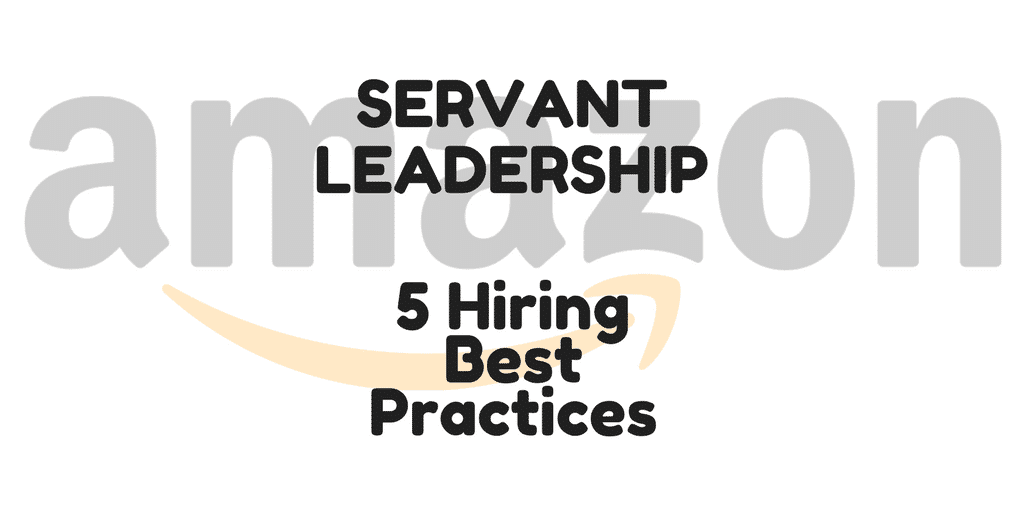I’ve been buying a lot of stuff on Amazon lately.
An Amazon “Wish List” comes into my inbox. I log in to Amazon. A few clicks and wow, before you know it, boxes arrive at the front door.
Buying stuff on Amazon is easy.
So is returning stuff.
Indeed, Amazon is so easy, I buy stuff knowing I will return it should I feel even a touch of buyer’s remorse.*
OK, Joe, OK, but what does that have to do with servant leadership hiring best practices?
Here’s the answer.
Amazon allows 30 days to return merchandise for a full refund. Which reminds me of an experience I had a few years ago.
I was trying to fill an open position on my team. But I couldn’t find the right person. The search was taking longer than I had hoped. One of the team members gave me this advice:
“Look, Joe, don’t worry about it so much. Just hire any candidate. If the person doesn’t work out in 30 days, you fire them and hire someone else.”
A servant leadership hiring best practice, right?
Of course not.
But, here are 5 servant leadership hiring best practices.
- Build a pipeline before job openings occur. Be proactive. The best servant-leaders are always on the lookout for talent – during work hours and after. The best servant leadership companies have strong internship programs, are active in industry groups and build partnerships with ethical business organizations, all if which gives them a good talent pool – and a competitive advantage.**
- Know the team and what it needs. Smart servant-leaders use assessment tools like DiSC or HBDI to understand themselves, other team members and the team as a whole. Moreover, they use those tools to identify their needs, inform the hiring process, evaluate candidates and build a high-performing team based on data.
- Focus on character. Servant-leaders in the workplace are quite concerned about who people are, not just what they’ve done – their virtues*** – what motivates them (their “why”) – and whether they have a desire to serve others. Improving an employee’s knowledge, skill and experience is relatively easy. Improving an employee’s character? Not so much.
- Involve the team in the process. Five reasons: (1) you get a better decision; (2) you build trust within the team; (3) you develop the more junior team members in the art and science of hiring; (4) you signal the candidate that your organization values collaboration; and (5) you create a sense of “ownership” in the future success of the new hire.
- Don’t settle. Hiring is among the most important decisions a servant-leader in the workplace will make. Get it right and life is heaven. Get it wrong, and life is . . . that other place. Take the time you need. Don’t be rushed. And remember, you owe it to the candidate as much as to the team to arrive at a good decision.
Hiring people is not like buying on Amazon. Returns aren’t easy and refunds aren’t available!
What do you think? Am I missing something here?
Let us know.
As always, we appreciate your views.
Thanks!
Joe
And don’t forget to download our latest ebook, Servant Leadership in the Workplace: A Brief Introduction. It’s free!
_______________________________
* If anyone from Amazon is reading this, let me add that Atlanta would be an absolutely wonderful place for you to put your second headquarters.
** Shout-outs to three of my favorite ethical business organizations: Social Accountability International, Alpha Kappa Psi and Conscious Capitalism.
*** See what you think of this one: “Three Cardinal Virtues of a Servant-Leader”

